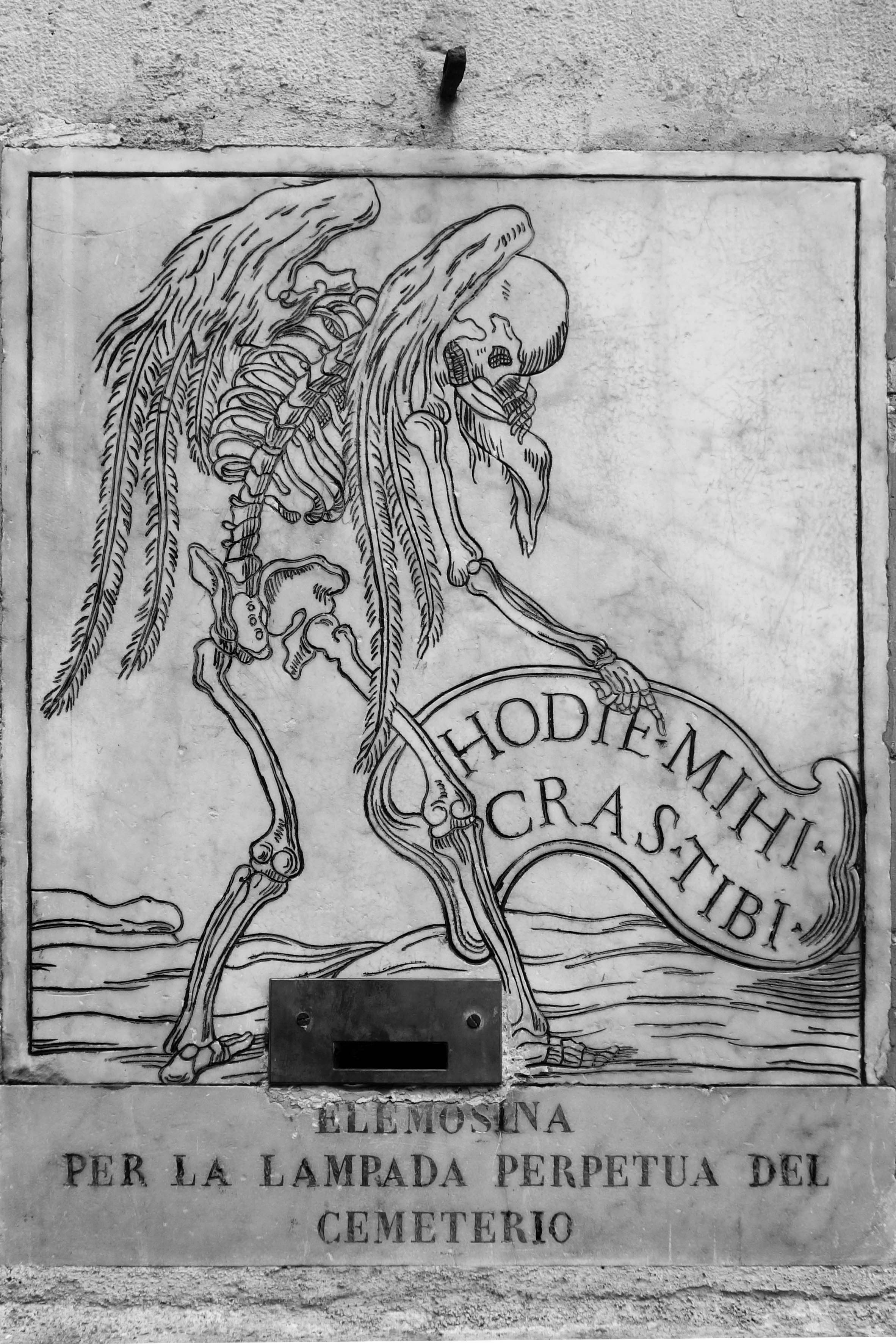
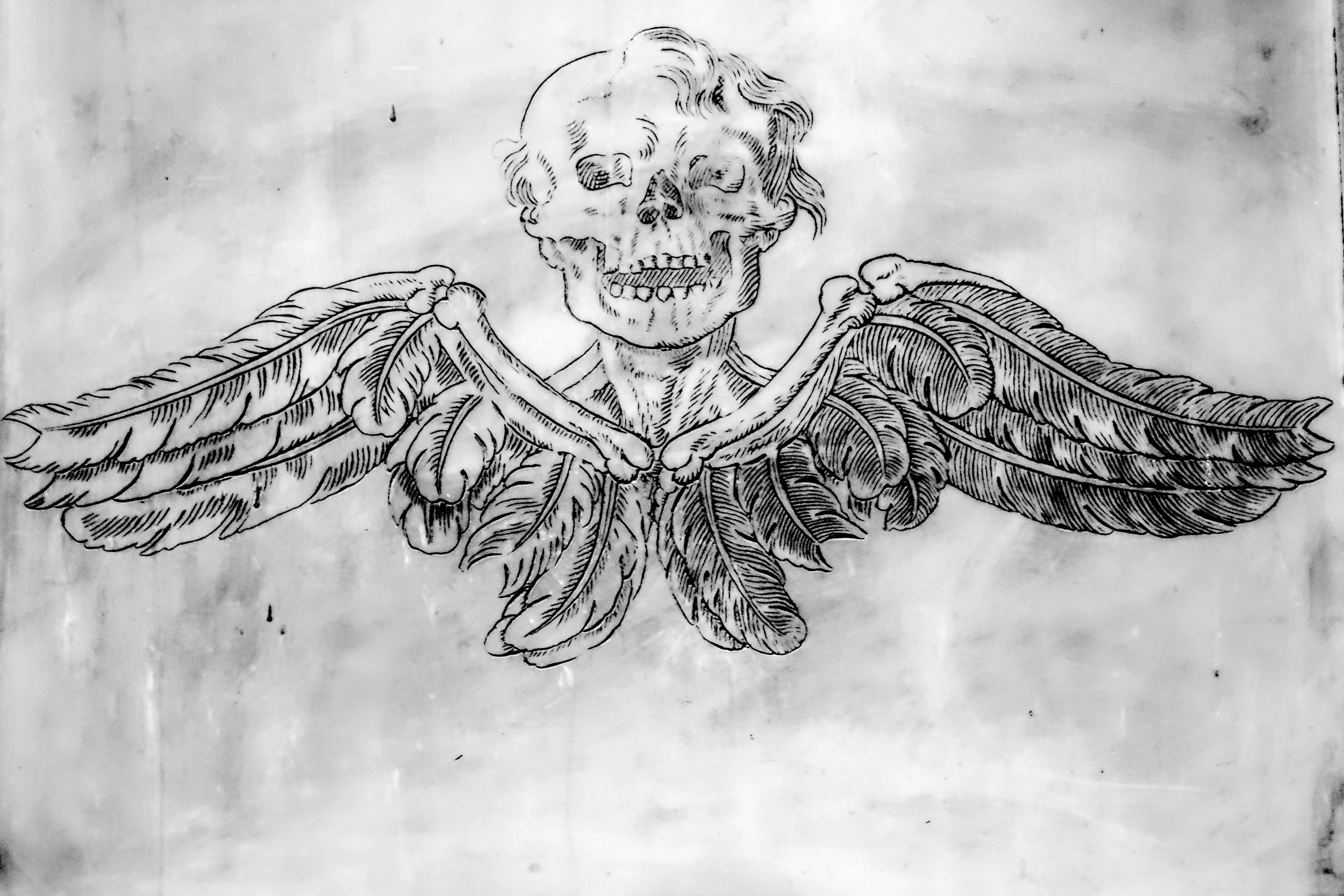
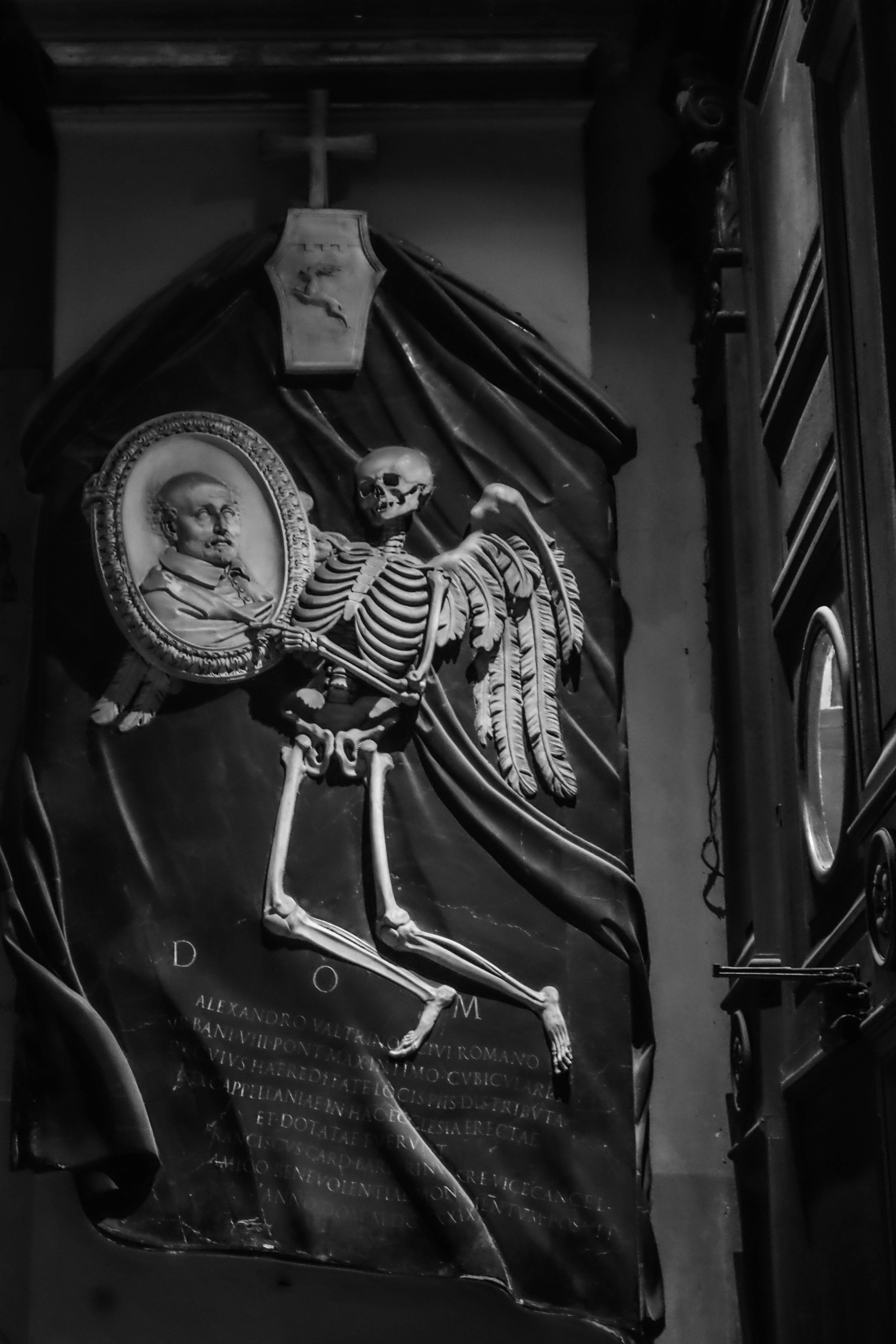
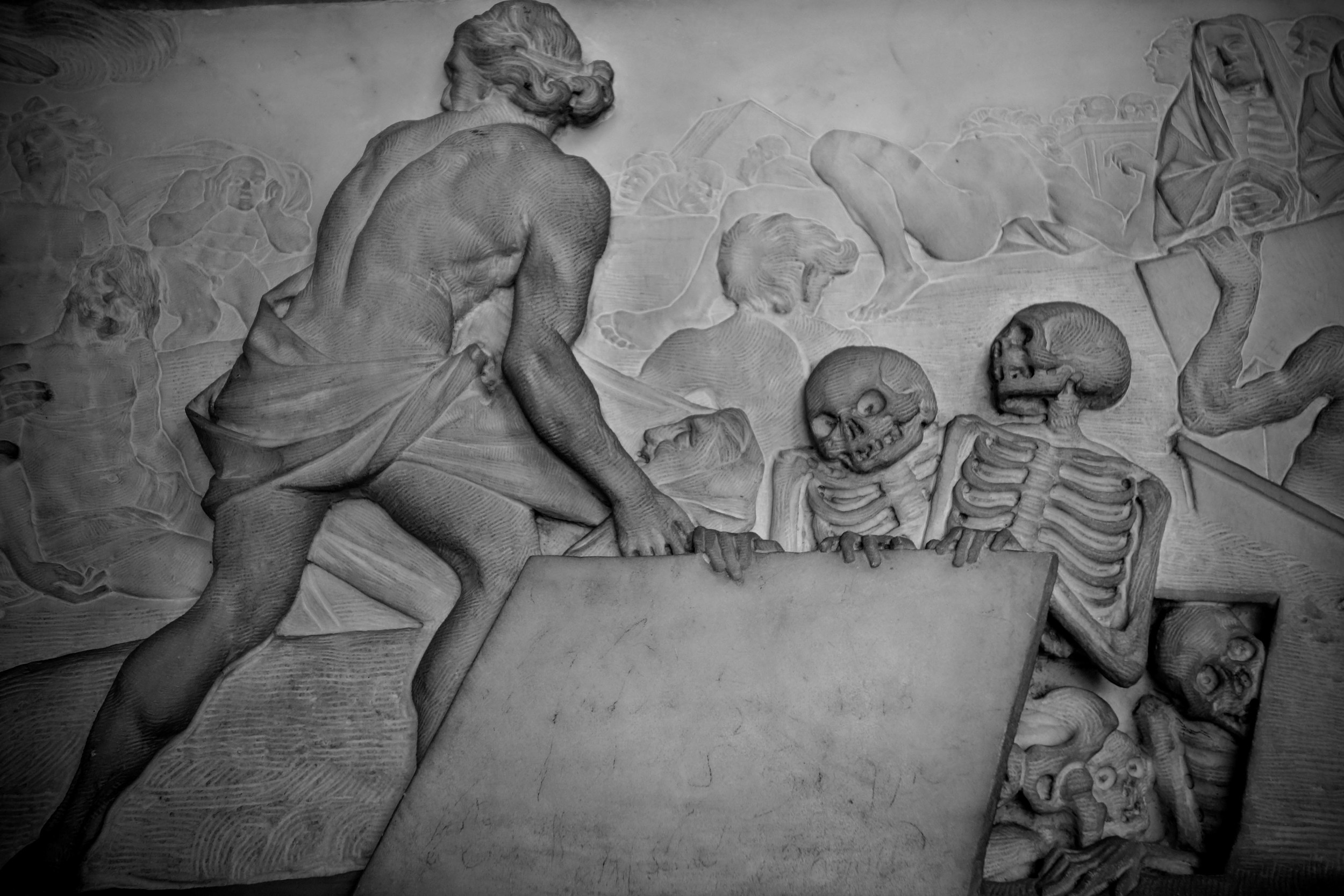
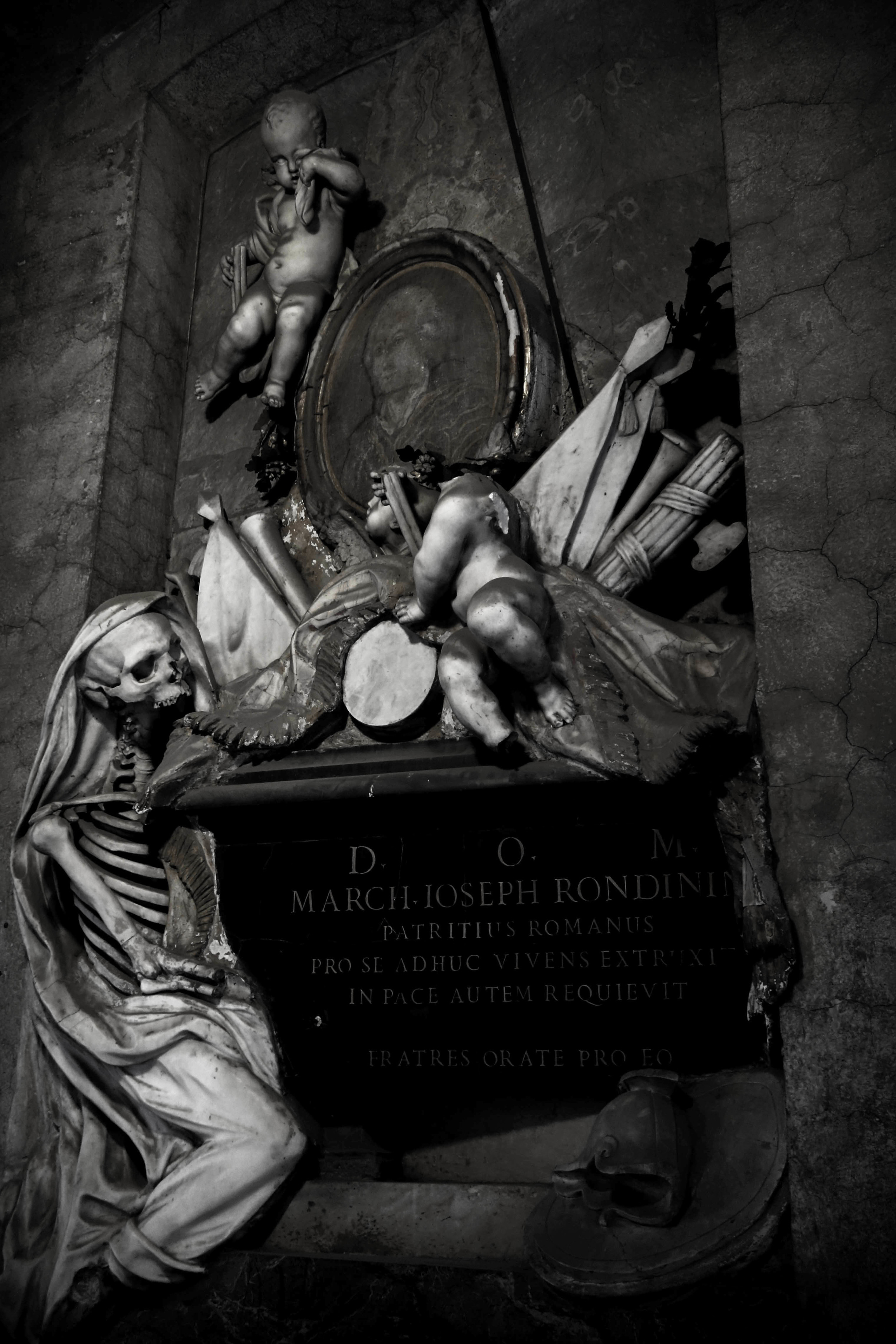
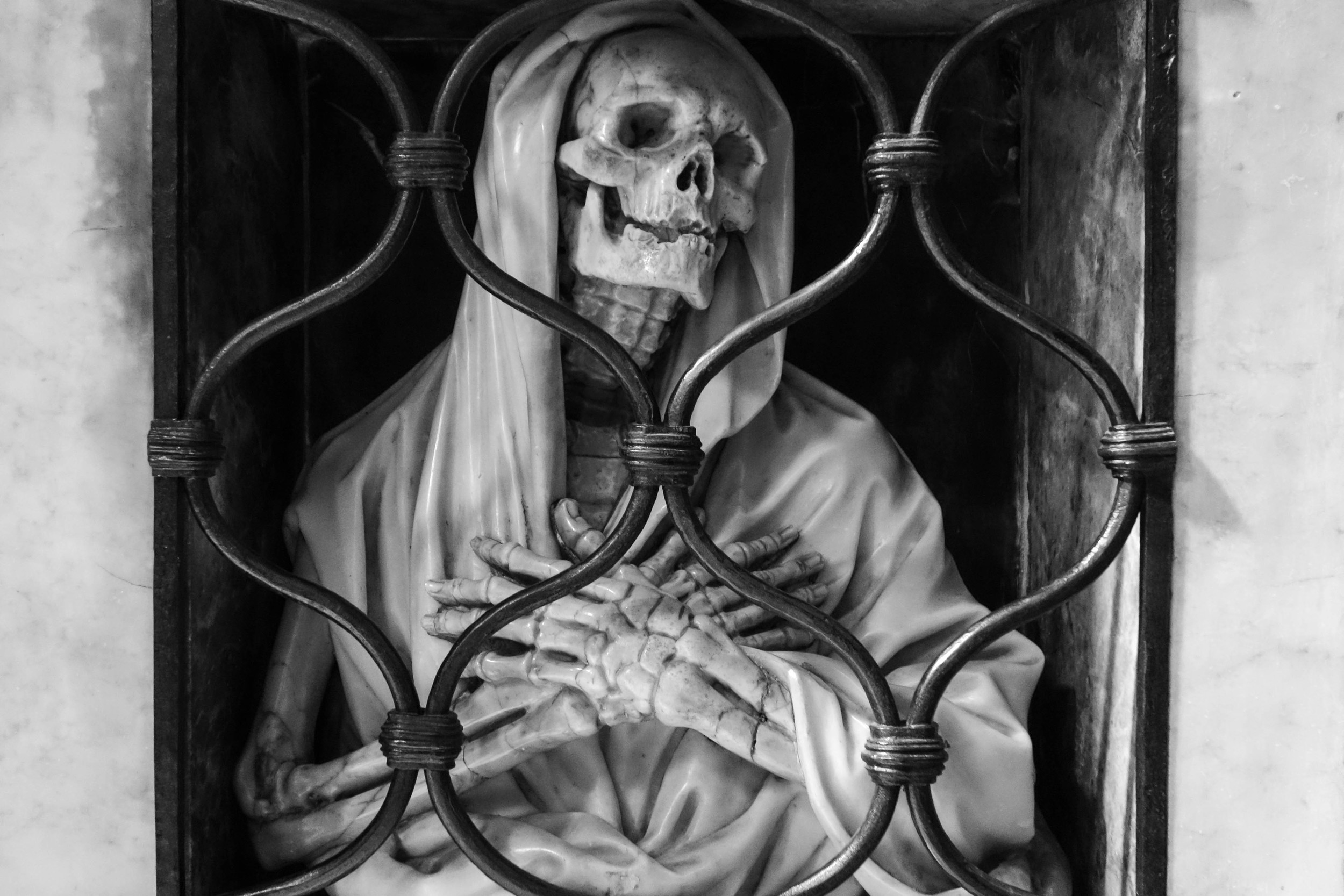
Your Custom Text Here
Originally published on Swide by Ben Taylor.
Photographer and urban explorer Elizabeth Harper has found herself charmed by the last thing one would expect to be charmed by… the skeletons of Rome. Now, I’m not talking those that lay beneath our feet or those of the saints stored in intricate glass tombs, no, I am talking about the grand marble skeletons that creep, play and oversee the chapels and churches of Rome. There are those that are celebrating the macabre, skeletons that appear to be mocking the dead (or is that the living?) and there are those that revel in the gloom that they perpetuate.
This juxtaposition of life within the dead is a style that was made popular by Italian artist and architect Gian Lorenzo Bernini (1598 – 1680) who worked principally in Rome. You’ll recognise his name as the master of Rome’s baroque fountains, namely the Fountain of the Triton and the Barberini Fountain of the Bees.
Armed with a camera and a creative eye, Elizabeth Harper has hunted down the skeletons of Rome and created a collection of photographs that tell stories of those passed and of those to come.
It’s no surprise that these skeletons often come bearing solemn messages; one in particular can be found on an engraved skeleton on the façade of Santa Maria dell’Orazione e Morte and has written ‘Hodie mihi. Cras tibi.’ ‘Today me. Tomorrow you’. But, as Elizabeth Harper explains, ‘though the skeleton may only say, “You are going to die," for some that implies, “You haven’t lived yet.’
One thing you’ll notice about many of these striking statues and pieces, is that the skeletons have wings, prompting a belief that death is simply the first step towards something much greater and, perhaps, eternal life.
Originally published on Swide by Ben Taylor.
Photographer and urban explorer Elizabeth Harper has found herself charmed by the last thing one would expect to be charmed by… the skeletons of Rome. Now, I’m not talking those that lay beneath our feet or those of the saints stored in intricate glass tombs, no, I am talking about the grand marble skeletons that creep, play and oversee the chapels and churches of Rome. There are those that are celebrating the macabre, skeletons that appear to be mocking the dead (or is that the living?) and there are those that revel in the gloom that they perpetuate.
This juxtaposition of life within the dead is a style that was made popular by Italian artist and architect Gian Lorenzo Bernini (1598 – 1680) who worked principally in Rome. You’ll recognise his name as the master of Rome’s baroque fountains, namely the Fountain of the Triton and the Barberini Fountain of the Bees.
Armed with a camera and a creative eye, Elizabeth Harper has hunted down the skeletons of Rome and created a collection of photographs that tell stories of those passed and of those to come.
It’s no surprise that these skeletons often come bearing solemn messages; one in particular can be found on an engraved skeleton on the façade of Santa Maria dell’Orazione e Morte and has written ‘Hodie mihi. Cras tibi.’ ‘Today me. Tomorrow you’. But, as Elizabeth Harper explains, ‘though the skeleton may only say, “You are going to die," for some that implies, “You haven’t lived yet.’
One thing you’ll notice about many of these striking statues and pieces, is that the skeletons have wings, prompting a belief that death is simply the first step towards something much greater and, perhaps, eternal life.